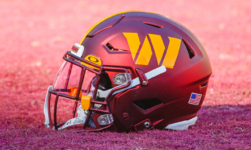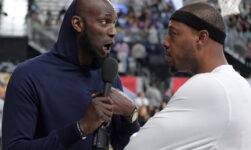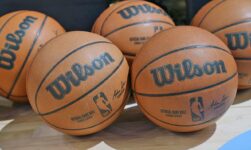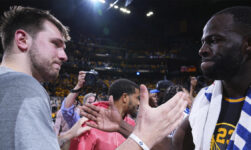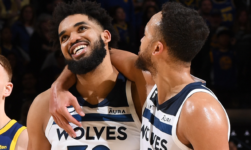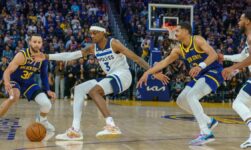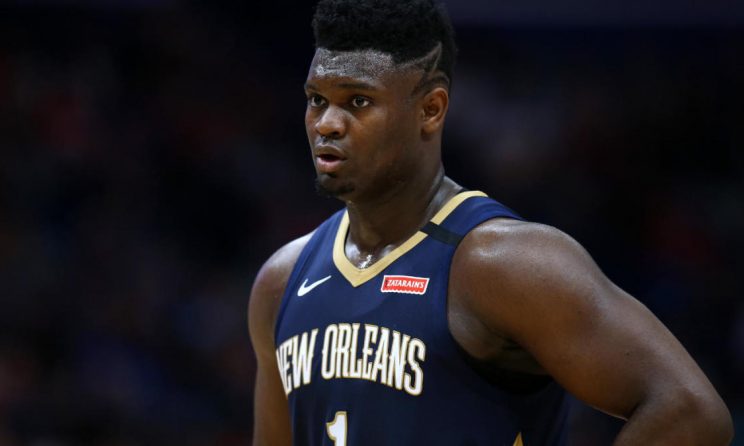
The New Orleans Pelicans were one of the most disappointing teams in the bubble this summer, where they went 2-6 in the restart games and never made a serious push for the playoffs. But despite the way last season ended, there’s still plenty of excitement in New Orleans.
And while they made a number of big moves, including re-signing Brandon Ingram to a max contract, trading Jrue Holiday to the Milwaukee Bucks for Eric Bledsoe and a boatload of picks, and acquiring Steven Adams from the Oklahoma City Thunder, everything really comes down to one man: Zion Williamson.
The No. 1 overall pick in the 2019 NBA Draft, Williamson never really got going last season due to injuries and the shutdown which occurred shortly after he returned. Even when games resumed in the bubble, he was not 100 percent and was kept on a minutes restriction by then-head coach Alvin Gentry and the medical staff.
But even in limited game time, he showed flashes of why he was one of the most-hyped prospects in recent memory. He put up 22.5 points, 6.3 rebounds and 2.1 assists per game, was incredibly efficient at finishing around the rim and put together a highlight reel that would rival any player in the league.
Even at less than his full capabilities, Williamson was still one of the most electric players in the league, and having him back won’t just be a joy for fans, but a tremendous boost to the Pelicans. Without him last season, their net rating was minus-2.7 points per 100 possessions, but when he was on the floor it jumped to plus-5.7. Of course, there are a lot of factors at play there, but it shows what sort of impact he can make.
But beyond the obvious, there’s another reason to be interested in the Pelicans this season. On Monday, team president David Griffin addressed the media and made an interesting statement when asked about how Williamson and Adams will fit together on the floor. During his long and winding answer, Griffin said that the Pelicans envision Williamson playing the 3 on both sides of the ball this season.
Griffin’s full quote:
We very much believe Steven and Zion are going to work very well together. A big part of the reason is because Steven is such an elite screen setter, he can do that on or off the ball. Zion can be used as a cutter away from the ball, he can be used as a ball-handler. People, I think, unfairly look at him as a big, and being limited to being a 4/5. When we drafted Zion, the thing that excited us the most is the position-less nature of his game. We very much envision a time where Zion’s going to be playing the 3 and defending the 3, and he’s going to be on the handle and Steven’s going to be the one setting the screen. And coach Van Gundy can address a lot of these things, but can you imagine a double screen set by Steven and Zion, and Zion rolls to the ball, Steven is gonna be able to make decisions in dribble hand off situations.
So we think they can work very seamlessly together. We had lineups with Zion and Derrick Favors on the court last year that were among our best and most successful, and Steven can represent that same location on the court in terms of working from the dunker. I think people put an awful lot — and I’m one of them, frankly — of stock in the ability to stretch the court and shoot from the big position. Not enough is made of the ability to set a physical screen and make the right read as a passer, and Steven gives us that.
Given Williamson’s size and stature, this comes as a bit of a surprise. It’s worth acknowledging that Griffin didn’t dive into specifics, so we don’t know exactly what those lineups would look like, or how often they’ll be used. Also, in the same breath as saying Williamson would play the 3, he said he was position-less, so this could just be a case of semantics. But in any case, it’s clear the Pelicans believe Williamson can operate on the perimeter to some extent, and it’s worth taking a look at some of the pros and cons of that idea.
Pro: Protecting Williamson’s body
Williamson didn’t even play an NBA game before he needed knee surgery, and months after recovering from that he was still operating under a minutes restriction. With his injury history, unique body shape and extremely physical style of play in the paint, it’s clear that health is going to be a major factor for Williamson moving forward. Playing him at the 3 for some portion of each game could help spare him from some of the wear and tear that comes with battling against bigger bodies all night long.
Con: Defense
The potential for Williamson on the defensive end is obvious. We saw it in college and even flashes of it in the pros. Just look at how he moves his feet here and completely smothers Collin Sexton.
But far too often last season, we saw the bad side of Williamson’s defense. Whether it was a health issue or just the growing pains of being a rookie, he often looked lost and a step slow on that side of the floor. Watch here where he’s completely confused and off-balance on the pick-and-roll coverage.
Or here where he’s back on his heels and way too slow to react to his man coming off the screen.
If he’s going to be guarding 3s on a nightly basis — arguably one of the toughest jobs in the league — he’ll have to be locked in on that end of the floor. In addition, he’ll also have to be in much better shape to be chasing perimeter players off screens and moving his feet in isolation situations. We know he can do it, but now we have to see it on a regular basis.
Pro: Opening up Williamson’s slashing game
As Griffin mentioned in a different part of his press conference, Williamson was “historically efficient” last season. Per ESPN Stats and Info, his points per minute of 0.8 trailed only Wilt Chamberlain among rookies all-time. He shot 58.3 percent from the field, and 62.3 percent in the restricted area, which is where a large majority of his shots came from.
Yet while he scored on well over half of his attempts at the rim, Williamson wasn’t some dominant post-up player. Rather, he found his buckets in transition, off of cuts and by gobbling up offensive rebounds. With his combination of strength and athleticism, he could go through defenders as easily as he could jump over them.
When he gets going downhill he’s extremely difficult to contain, and moving him to the 3 could make it easier for him to play in space more often, where he can really show off his burst.
Williamson is also smart about finding space when he’s playing off the ball. He knows when to flash into the paint, or when to sneak backdoor. These instincts will come in handy if he’s playing more on the perimeter as a 3.
Con: Lack of spacing
Griffin indicated that he wasn’t worried about the lack of spacing, but that issue can’t be ignored. While Williamson did shoot 42.9 percent from 3-point land last season, he only took 14 attempts and isn’t a serious threat from outside. If the Pelicans play lineups with Lonzo Ball, Bledsoe, Ingram, Williamson and Adams at the same time, that’s a lot of suspect shooters. The lack of spacing would make things more difficult for everyone, but especially Williamson, who lives in the paint. How will Williamson show off his cutting ability and make plays in space if teams are able to sit back and clog up the lane?

